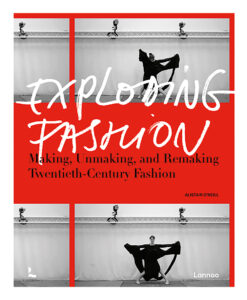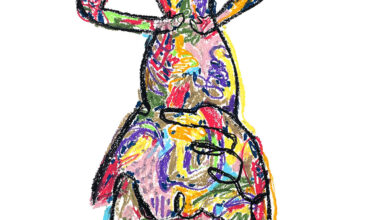From fabric to fashion
Reanimating archival couture through digitisation and the art of pattern cutting

From Halston to Cristóbal Balenciaga, MoMu’s exhibition celebrates the craftsmanship of pattern cutting. In a collaboration with Central Saint Martins, the exhibition titled “Exploding Fashion” is a research project that reconstructs five historic 20th century dresses from museum archives, showing how the creative minds behind these designs turned fabric into fashion.
Words by Fernanda Russomano
With applications of AI becoming more widespread and the expansion of daily life into the metaverse, there is no denying how much technology permeates society today. It seems every day, a new digital tool is introduced to overhaul a familiar approach. With the current engagement in virtual realities, the Exploding Fashion exhibition brings to life surviving dresses by key 20th century designers with the help of hyperrealistic 3D animations, allowing viewers to have a better understanding of how they were originally designed and how they once moved on a physical body. Working backwards, “Exploding Fashion” makes, unmakes and remakes five iconic pieces in 20th century fashion history, adapting them to the digitally driven, visually focused 21st century.
Museum dress collections not only enrich fashion history, but also allow fashion enthusiasts to get a closer look at one-of-a-kind silhouettes, fabrics and design techniques. However, being displayed on lifeless mannequins and busts, one of the key aspects of a garment is left up to the imagination: its movement. With the help of a multidisciplinary team from the renowned fashion school Central Saint Martins, the five selected garments get a digital version, projected around the walls of the MoMu—Antwerp’s fashion museum, or the Mode Museum—and allowing visitors to experience the historic dresses in motion. The five selected pieces include designs by Madeleine Vionnet (1912-1939), Charles James (1928-1978), Cristóbal Balenciaga (1936-1968), Halston (1957-1983) and Comme des Garçons (1973-ongoing).

Exploding Fashion was inspired by how museum dress collections enrich fashion history. MoMu’s 2016 exhibition, “Game Changers: Reinventing the 20th Century Silhouette” motivated us to develop the research project, so we are honoured and thrilled to stage the findings as an exhibition and book at the fashion museum. Long live MoMu!
– Alistair O’Neill, professor of Fashion History and Theory at Central Saint Martins





Leading to the final output of the dresses’ transformations into 3D animations, the research project brought together an uncommon team of experts: Patrick Lee and Esme Young as the pattern cutters, Caroline Evans as the project historian, Alistair O’Neill as the project curator, Isabella Coraça as the project researcher, Liam Leslie as the digital lead, Kitty Garratt as the fit model, and contemporary dancer Kate Coyne. To ensure their preservation, the original dresses cannot be worn, so the pattern cutters used a method know as “lifting” the patterns, which consists of measuring the garments flat on a table. This method is commonly used by designers that take inspiration from vintage garments and it allows for the copying of a garment for which a pattern does not exist or cannot be accessed.
After being measured during multiple museum visits, the research team returned to Central Saint Martins to reverse-engineer these celebrated dresses. By making patterns, films and prototype dresses fitted on real-life models, the team unmasked the construction process and the unique design details of each dress that could not be seen in the museum—like the hang of the skirt of the Charles James dress that is achieved by coin weight sewn into the hem, or the Vionnet dress that according to the team “looked geometric and austere, but on a body in movement it became fluid, sensual and dramatic.”







Through the digital reanimation of museum objects as moving images, the “Exploding Fashion” exhibition allows visitors to experience fashion history in a new way: combining the fashion design practice and academic theory to produce innovative fashion thinking for the future. By ‘exploding’ the process behind the creation of the garments, the project highlights the essential role of the pattern cutter and celebrates these five revolutionary fashion designers, who indeed were also innovative pattern cutters themselves. The exhibition shows that the pattern cutter’s craft is truly a technical, conceptual and creative endeavor: turning a two-dimensional cloth into a three-dimensional garment form, and into wearable fashion.


Together with the exhibition, the curator Alistair O’Neill published the book “Exploding Fashion: Making, Unmaking, and Remaking Twentieth-Century Fashion”. The publication documents the research project and features 200 illustrations, including key dress designs, photo-collages, innovative pattern-cuttings and pencil drawings.
The “Exploding Fashion” exhibition will be on display until 5 February at MoMu Fashion Museum in Antwerp, Belgium. For more information visit momu.be.
All images courtesy of Momu Fashion Museum.





